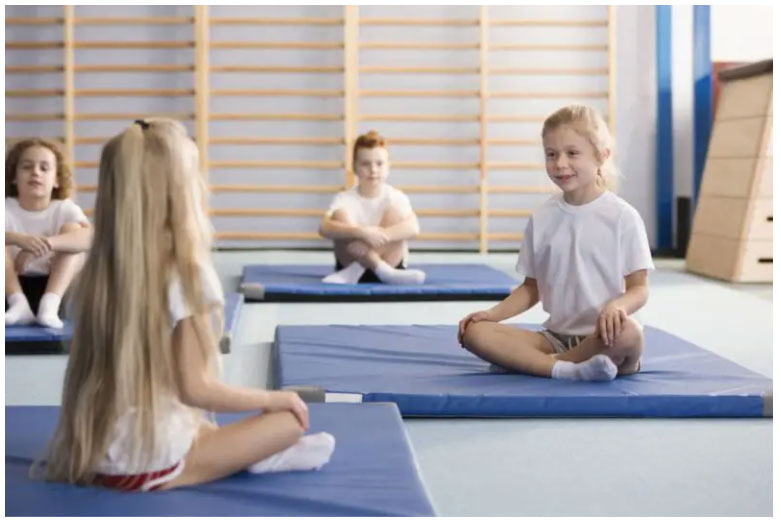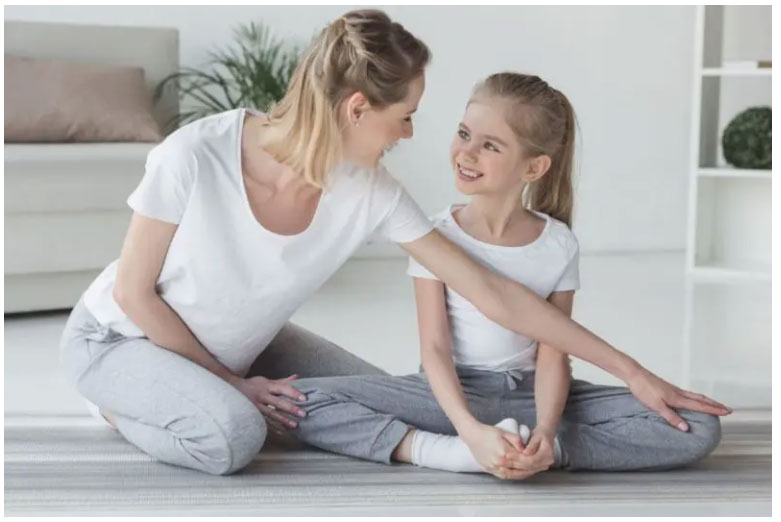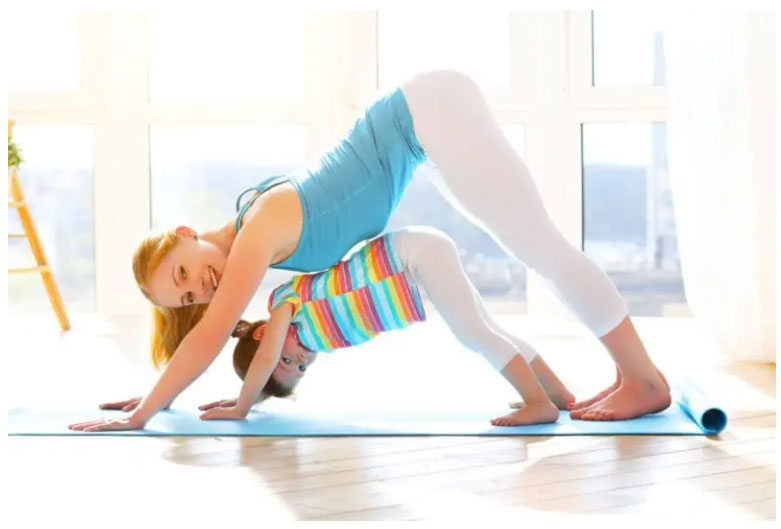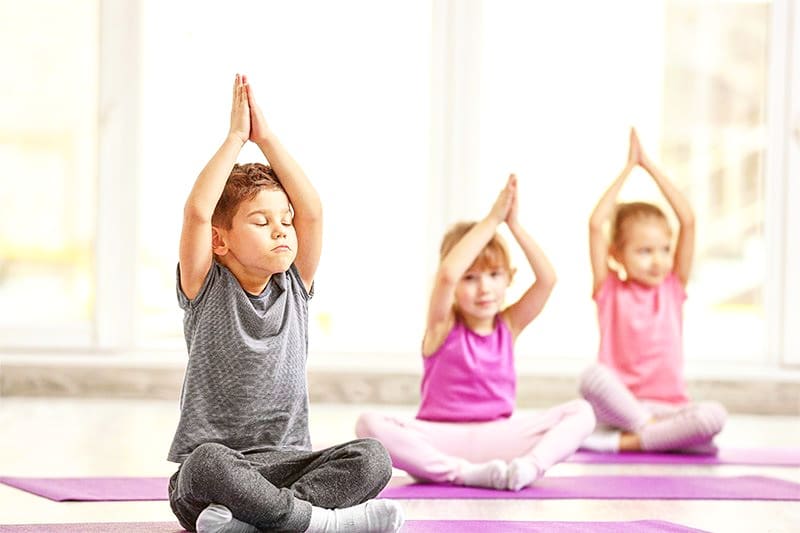Yoga children
Children and toddlers sometimes have problems with concentration, hyperactivity, weight gain, etc. Doing yoga with your children can help solve these types of problems. However, the practice of yoga for little ones must be adapted to their age for a safe activity. How is children's yoga practice different from that of adults? What are its benefits? How to set it up? What are the precautions to take? Find out in this article!
Why introduce your children to yoga?
Choosing to offer yoga to your children can be done for different reasons:
• hyperactivity
• weight gain
• Refusal to participate in sports in general
• bad sleep
• concentration problems
• too much time spent in front of the screens
If you have a child with one or more of these problems, yoga is the ideal physical activity. It is also a great way to strengthen or build strong bonds with your children.
Benefits of such an activity
In addition to relaxing and soothing your little ones, this activity brings many benefits, both physically and mentally.
Physically, it allows the child to gain flexibility for all parts of the body. In most cases, it can relieve or eliminate back pain. It is obviously a great way to become aware of one's body and breathing.
Mentally, it develops above all the capacities of concentration of the apprentice yogi. It also helps him to better manage his emotions, reduce his stress while developing his level of self-confidence.

What are the particularities of yoga for children?
Toddlers can do yoga. Be sure to respect your child's particularities. It requires an approach adapted to their physical abilities, their desires and their concentration. For this, it is necessary to make it a fun activity, so that your children have fun. The sessions will be short, and will generally last between 5 and 40 minutes maximum, with captivating postures for the child such as cat, dog upside down, belly dancing, etc.
From 3 to 5 years old, the practice will be centered around play. From the age of 5, you can progressively integrate exercises that require more concentration. However, be careful: the practice of yoga must above all be enjoyable for your child. If you see that he doesn't like a certain approach, change it! Never force your child to do a session, posture or exercise if he doesn't want to! You can contact teachers who are used to doing sessions with children. You can also learn how to teach yoga to do sessions at home.
A child apprentice yogist has a lot to gain by practicing in a group, to develop his relational intelligence.
Also remember to choose a quiet place, and to do it outside as often as possible. Some children are more receptive to quiet music, just give it a try. Finally, prepare your session while accepting that your child may not always want to do yoga.
How does a session take place?
A session generally takes place in 4 stages: a time for refocusing, a time for breathing, a time for yoga postures and a time for relaxation. You will also read about the duration of a session and methods to help your child concentrate.
Refocusing
It's time to settle down, in a seated position. Use everything you can to make it comfortable (cushion, yoga mat). Direct your attention to your breathing, rubbing your palms together in circles. If you like it, place them on your body where you want, to soak up the warmth. When you take them off, focus on the cool feeling.
Breathing
The games practiced during yoga can help to discover the breath, the breath. Your child will learn to breathe in and out in synchronization with his movements. He will then be able to control his abdominal breathing, which brings many benefits. Session after session, the goal is to make him focus more and more on his breathing, and especially on his breathing rhythm. Such an awareness will be useful to him throughout his life, in many situations.
Postures for children
The postures that the children do have names that entertain, intrigue and captivate the little ones. You will often find animal names, or any kind of funny names. Discover 5 postures for children.
Cat : Get down on all fours, and alternately do the hollow back while breathing in, looking up to the sky. Then, make the round back while exhaling, look towards the navel.
Dog Head Down : Here, the body will form a triangle by placing the hands on the ground shoulder-width apart, far in front of you. Then bring your heels as close to the ground as possible. As with all postures, this is an exercise in full body awareness, which should do some good.
Roaring Lion : Place your child on his or her lap, with hands on top, fingers spread out. Then, have your child lean forward a few centimetres, mouth open, tongue out, eyes wide open, exhaling hard, until his lungs are empty. To amuse him even more, you can let him roar like a little lion!
Belly Dance : Here, the child is standing with hands on hips. He will then draw a figure eight with his hips.
Goddess Of Sleep : First of all, you have to sit with your back straight and your legs straight. Then, you have to bend your legs, to have the soles of your feet stuck together. Relax and lie down on the floor. Then, extend your arms to the side and breathe normally. This is a very relaxing posture. Remember to lean on your elbows to lie down and get up when you want to get out of the posture.
If you do yoga at home with your child, learn the postures first and then show them to your child. It will be much easier for him or her.

Relaxation for children
Most of the yoga sessions for children and toddlers end with a little relaxation time on the floor. This will teach your children how to relax, making it easier to open their bodies and minds. They will even be able to channel and manage their energy, to learn to focus their attention on what they want. It is also a way to learn to appreciate themselves, to be at peace with themselves. In this sense, yoga is a kind of school of life.
You can relax on your yoga mat with your child, or modify your environment: take a blanket, turn off the lights, turn on a diffuser of essential oils, put on soothing music, etc.
The posture of the goddess of sleep allows great relaxation. Something as simple as lying on the floor with your arms along your body can also relax your little one. This relaxation can be as short or as long as you wish.
These few minutes of silence are an opportunity to meditate, to thank your body. Then gently open your eyes, gradually move the different parts of your body. Sit down, stand up, thank each other for sharing this moment. It is also a time to teach your child to breathe well. Tell him to inflate his belly on inhalation and deflate it on exhalation. Putting a small object on his belly can help him control his abdominal breathing.
Duration
A session should be short because the children's attention span is very short. There is no set length of time for each age, as each child is different and grows at a different pace. The golden rule is, if your child is not having fun, stop (or don't even start if they want to do something else). On the contrary, if he is having fun, you can keep going. Make sure you don't go over 40 minutes per session, as this will tire him or her out. In general, a 10-15 minute session is ideal, but again, adapt to your child!
Focus
If your child wants to be able to concentrate better, try one of these three methods:
The Plum Tree
The plum tree is a fun exercise that will allow your child to let off steam. The child who makes a plum tree shakes his arms, legs, head and mouth for a few seconds. He can shake anything he wants, as long as he doesn't hurt himself. Let him shout if he wants to. Repeat the plum tree 1 to 3 times.
Clenched Fists
This exercise is done as follows: tighten your fists, jaws, and all parts of the body that you can squeeze for a few seconds. Then release everything with a loud exhalation. Repeat until your little one is relaxed and focused.
Auto-Massage
Perform a self-massage, and invite him to copy your movements. Gently massage your face, ears, neck, forehead, hands and feet. Observe if it seems to calm down. As with these 3 methods, if it doesn't work, try another one!

What precautions should be taken?
Before introducing your children to yoga or having them take classes, they must pass a medical examination. You will then know whether or not he is fit to practice, to be sure not to damage his health.
Here are some precautions to take to make his activity pleasant:
• Have him wear clothing that allows him to move around properly.
• Have him wear warm clothing if it's cold.
• Avoid doing it before bedtime, as it may excite him/her too much.
• Ensure proper execution of the postures to avoid back pain.
To make your yoga practice even more enjoyable we recommend that you choose a quality yoga mat.


